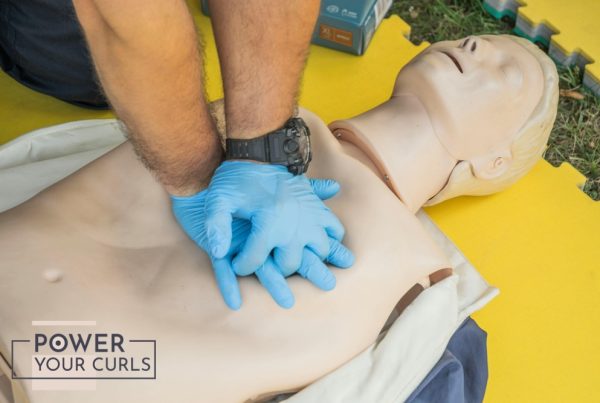
When you work a nine-to-five, sitting at a desk for that long is a killer on your back. Apart from stretching now and again, it would help if you had a heavy-duty office chair that’ll get the job done with you.
In this article, we’ll teach you how to measure and get the office chair of your dreams. But first, let’s talk about why we should choose the best office chair.
Why Do You Need to Choose the Best Office Chair for You?
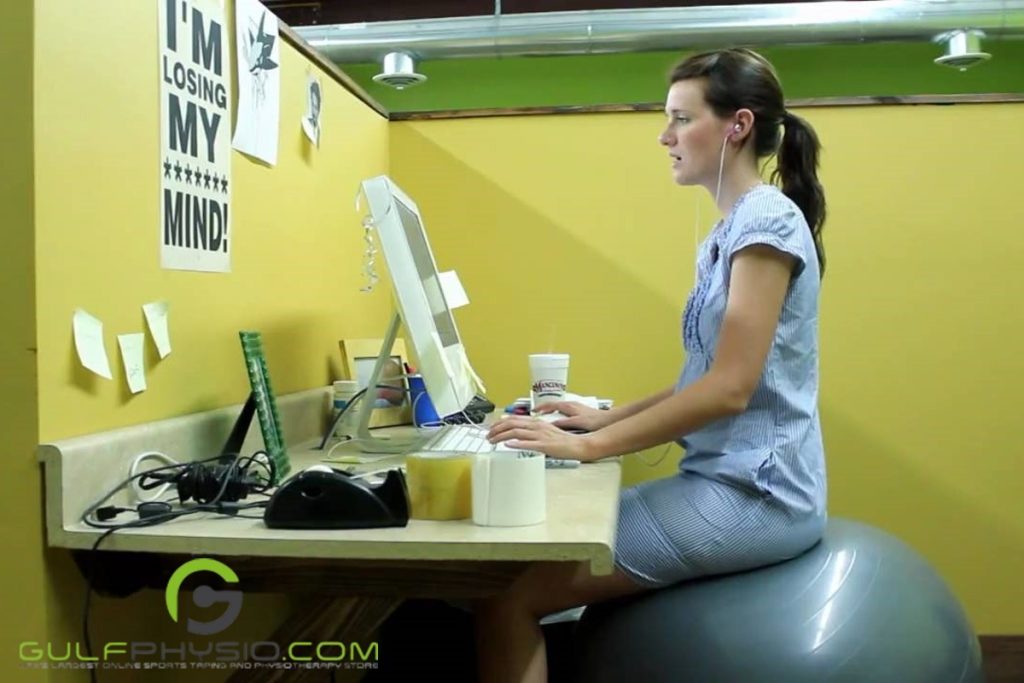
In the workforce, your health should be your priority as well. If you sit down for hours on end for your work, you need a chair that won’t strain your body. This is particularly crucial for desk jobs at the office or in the home. Staying in one position for too long is detrimental to your health, especially when it involves poor posture.
A good-quality office chair can help you avoid hip, back, and neck pain. It can also prevent overdue fatigue and enhance work quality over time. One of the leading office chair types that can guarantee an overall better work environment is the ergonomic chair.
What is an Ergonomic Chair?
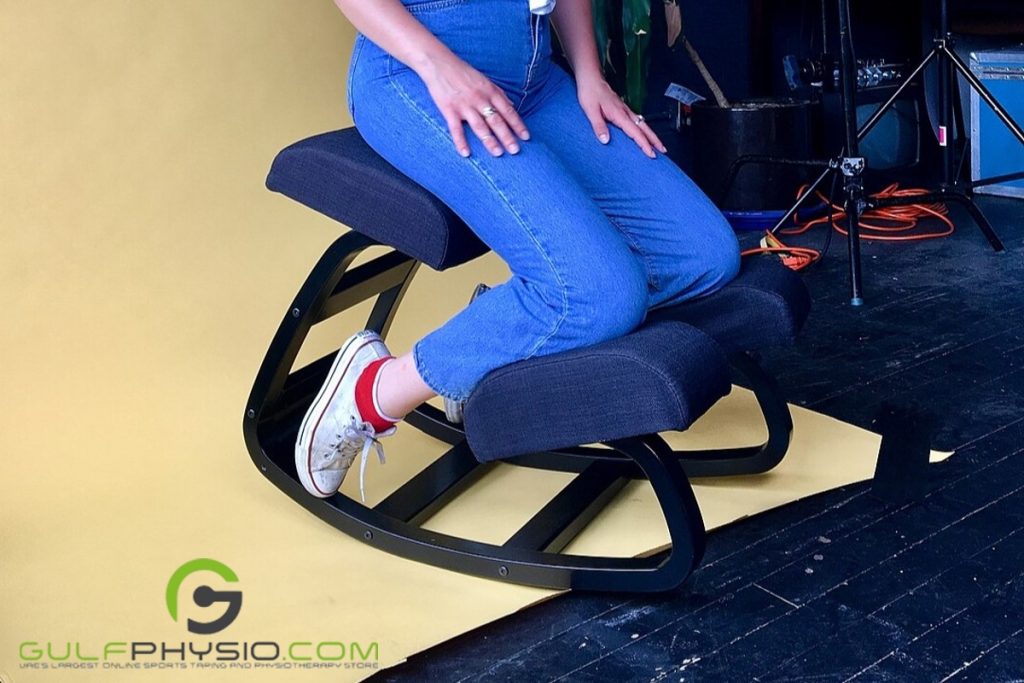
A chair that’s specifically made to fit and support your body is an ergonomic chair. A chair like this gives support to different parts of your body through armrests, headrests, and legrests. It helps you be as comfortable as possible, leading you to do your best in your job.
These chairs encourage your spine to maintain its natural ‘S” shape, limiting excess stress on your pelvis and back. Most ergonomic chairs are highly adjustable to offer the best fit possible.
Top Three (3) Unique Ergonomic Office Chairs
Kneeling Stools/Chairs
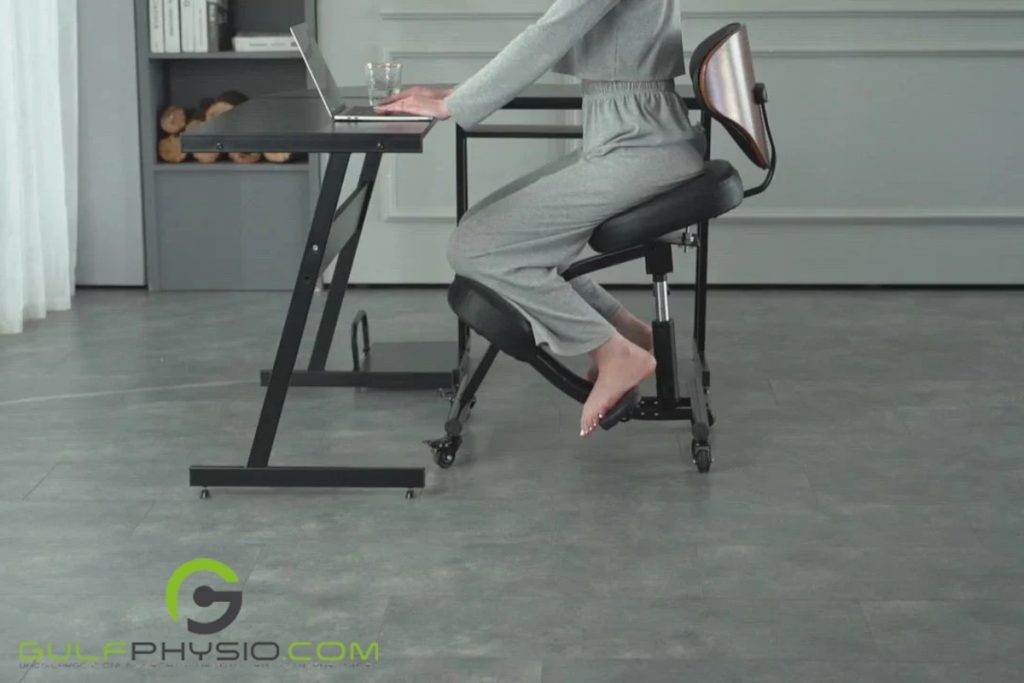
Improving the natural curvature of your lower spine will lead to better posture overall, including your upper body. Kneeling chairs are said to do this, and much more. They are known to fix both the upper and lower body positions. However, you can only achieve this when you don’t slouch and with the proper workplace set-up.
The distinct feature of a kneeling stool or chair is the cushion or support for your knees. With this design, you can use any desk since you don’t need your feet to reach the floor. You need to adjust your elbows in the right position to avoid misalignment.
It’s a simple chair option considering that it’s only height adjustable. It’s a good option if you work with multiple people at a single desk. One of its downsides is the restriction on your wardrobe choices. Sitting on a kneeling stool is inconvenient when wearing a skirt because of the central bar.
| The Advantages of Kneeling Stools/Chairs | The Disadvantages of Kneeling Stools/Chairs |
| There is no need to put your feet on the floor | They can fatigue back muscles easily |
| They are pairable to virtually any desk or table type | Don’t use them if you have consistent knee issues |
| They are accessible to multiple people since ithey require minimal adjustment | They are only usable with pants/trousers on, not skirts or dresses |
| They give you the right pelvic/lumbar/leg position |
Saddle Seats/Chairs
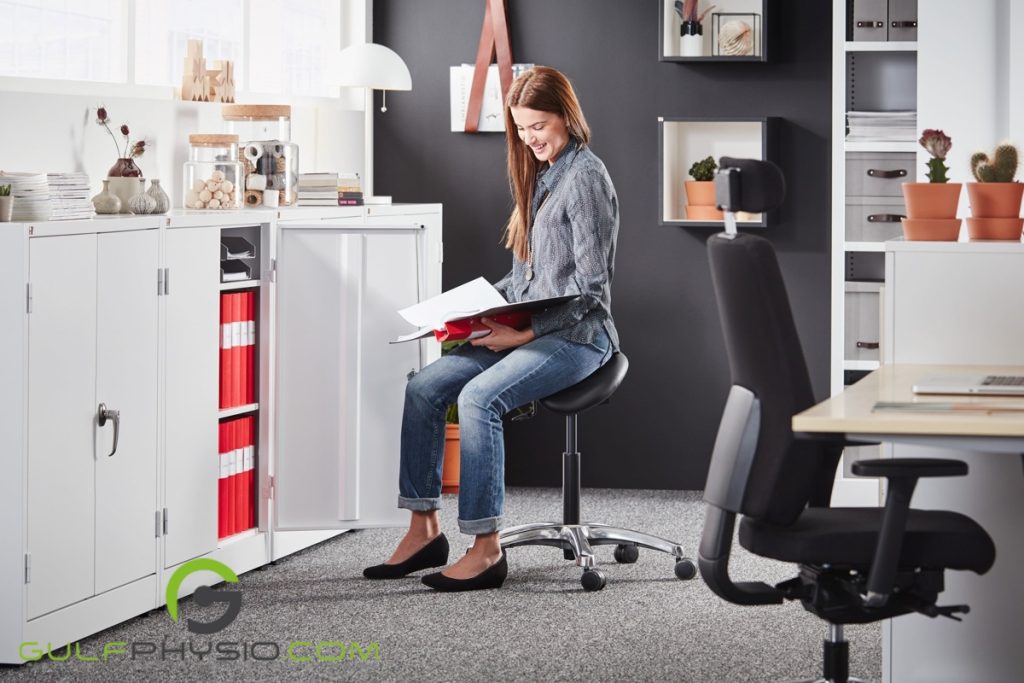
Medical professionals who stay seated (anaesthetists and dentists) prefer saddle seats and their design. These ergonomic office chairs can also help lessen pressure on their spine while making them lean forward.
These chairs reduce the risk of spinal injury even compared to other ergonomic chairs on this list. It’s one of your best options for long-term optimum spinal postures.
| The Advantages of Saddle Seats/Chairs | The Disadvantages of Saddle Seats/Chairs |
| They have the feel of a regular office chair | They can fatigue back muscles easily |
| They are accessible to multiple people since they require minimal adjustment | They are only pairable to higher or height-adjustable desk table types |
| They give you the right pelvic/lumbar/leg position | They can be costly |
| They are only usable with pants/trousers on, not skirts or dresses |
Exercise Ball Chairs
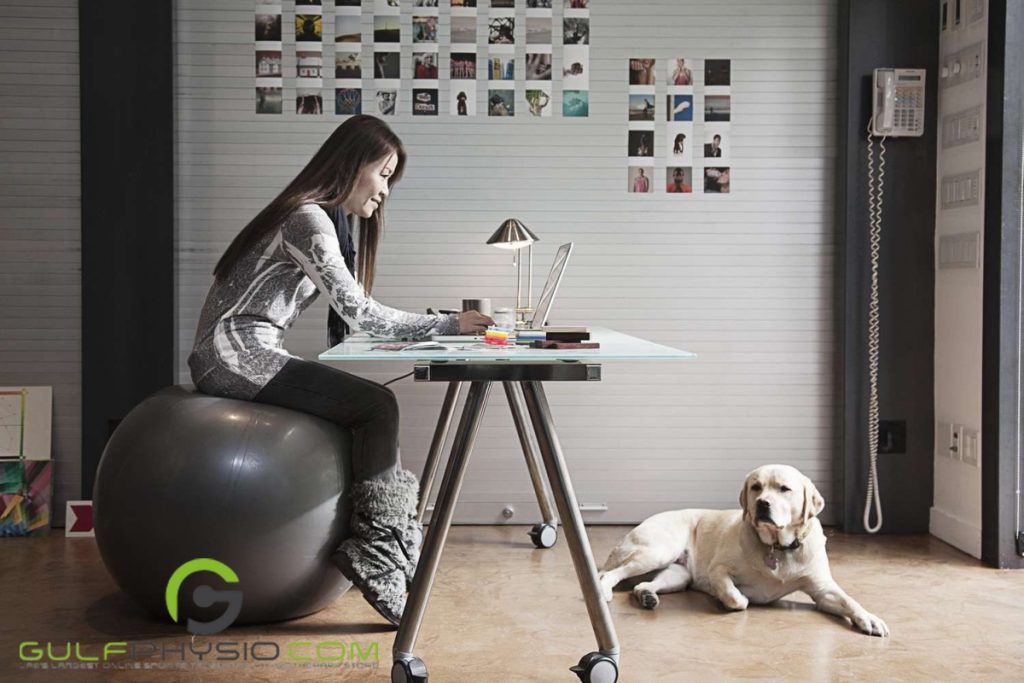
A popular ergonomic chair option is the humble exercise ball chair. According to users, this chair feels like exercising at work when you have one by your desk. They engage your spinal muscles and improve spinal posture, but your spine does shrink after an hour.
As much as the exercise ball chairs correct your arm position, your neck and shoulder (trapezius) muscles stay the same. These chairs are also made with height ranges in mind, not a specific person. Also, note that they are big and bulky for office chairs so keep that in mind when you purchase one.
| The Advantages of Exercise Ball Chairs | The Disadvantages of Exercise Ball Chairs |
| They have more signs of muscle activity | They are big and bulky, especially when inflated |
| They show signs of improved overall spinal posture | They shrink the spine after one (1) hour of use |
| They are accessible to a limited range of people since they are not adjustable | |
| They give visible discomfort after one (1) hour of use | |
| They Don’t affect the upper body at all | |
| They are only usable with pants/trousers on, not skirts or dresses |
What to Look for in an Ergonomic Chair?
Ergonomic chairs are made with a variety of designs and features. However, there are only a select few that are fully adjustable to every part of your body. If you’re ready to look for one that’s right for you, look into the following considerations as your guide:
1. The office chair should be the right fit for you

Almost every office chair has a seat or chair pan or the base where you’ll sit. The seat pan should be your size, with an inch or three (3) cm space on either side of you. Your back should reach the height of the chair’s backrest.
Your knees should have space to breathe. There should also be an inch or three (3) cm gap from the chair to your knees for proper circulation.
Alter the chair back with a cushion for your spine. These cushions are made to fit comfortably on your back. It makes the office chair search easier since you don’t need to focus on the shape of the chair backrest.
2. The office chair should be height-adjustable

Office chairs nowadays utilize the ingenious invention of pneumatic adjustment. It allows you to make tiny adjustments while sitting in their ergonomic office chair. You can test this by standing in front of the chair. Levelling the seat pan to your knees is a good indicator of a height-adjustable office chair.
Seat Pan Tilt
Lumbar spine health is better when the knees are lower than your thighs. Tilting the chair pan 30 degrees or less will ease your lower back while you work. Some chairs still don’t have this feature so you can meet your needs with a cushion instead.
Whatever cushion you choose should also meet the criteria above (measurements similar to the original seat pan, etc.). Not all cushions will be a hundred per cent fit for your office chair. As long as it gives you the tilt requirements without hitting your knees, then it should be fine.
3. The office chair should have the correct seat back

Ideally speaking, your ergonomic office chair should match your height while sitting. It should reach just above your shoulders. Your chair should either have the same height as you or have a height-adjustable back. Instead of being adjustable in that regard, some manufacturers make oversized chair backs.
Other adjustments include the backrest moving backwards and forward, depending on the user’s seat pan depth or thigh length. This is only useful when multiple people use the same chair.
Reclining the seat back on the other hand should only be considered if you’re planning to use it as such. Chair back angles for this feature should range from 110 to 135 degrees, depending on your needs and posture.
Four (4) Lower Back Sitting Positions
The main difference between regular chairs and ergonomic chairs is the presence of back supports. You’ll need back support, especially when your back aches even in the optimal posture or position. Sitting posture for your lower back can be categorized in the following research-based positions:
Slumped Posture
Also known as the bad posture position, slumped posture is the most common. This spinal position increases the pressure you put on your spine. It is the posture that will most likely lead to long-term back injury. Meaning, you should avoid sitting in this position.
Flat Posture
When your lower and upper back make a straight line with each other, you have a flat posture. In this position, your back needs the full support of your chair since you don’t move any of your muscles. Some medical professionals prefer this position, but not all of them.
Although a flat posture looks like the most proper posture, it puts added weight on your lumbar spinal discs. Because of this, it is not the best in rehabilitation and medical circles.
Long Lordosis
The posture that affects your rib cage while maintaining the natural curve of your lower back is the Long Lordosis. It also lessens the pressure on your spinal discs.
As much as it benefits your lower back, this posture is hard to do and keep up on your own. For the most part, comprehensive coaching is needed for people to attain this posture.
Lordotic Posture
Now, we’re onto arguably the best posture for the lower back, neck, thoracic spine, and rib cage. This is the Lordotic posture, the proper posture whether you sit down or stand up.
In this position, your rib cage curves one way while your lower spine curves the other. In doing so, it curves away from the straight chair back. The Lordotic posture does the following for your body:
- It focuses your centre of gravity on the pelvis
- It cuts down the stress on your lower spinal discs
- It keeps your neck in a neutral position
- It diminishes the muscle strain on your back
Correct Chair Back Support
In terms of office chair ergonomics, it’s an essential feature when the chair can fill the curve of your back. This feature can be adjustable or not even available since these chairs come in a variety of designs. Most of them do so any person can use chairs like these regardless of their size.
These supports are called lumbar supports and they work by making you not fully straighten your back. Typically, the angles of these supports should range between 3.1 to 3.6 degrees. To achieve this, you can have an office chair with a built-in back support or purchase a lumbar cushion.
Built-in Back Support
Try the office chair with a built-in back support first. You should check how you like it before finalising your decision. However, any chair will feel different after an hour straight of sitting down. The level of discomfort will differ between individuals since we all have different-sized curves on our backs.
The size of the curve your back needs as support is determined by this simple trick. Sit down on a chair with a flat back. Keep your back straight while you do this step. Then, move your hand between the chair and your lower back. If you can fit your whole forearm, the space is too big. If you can’t even fit your hand, the space is too small.
The chair of your choice should have a chair back that supports the small of your back. Manufacturers make these adjustable on the chair backs of office chairs and even car seats for this particular reason. You can adjust these lumbar supports or the whole chair back.
Additional Lumbar Supports
External supports for the lumbar region are available if you can’t find an office chair with the right back support. A support you can easily DIY to gauge how much curve you need is a rolled-up towel. Sit on a chair with a flat back. Then, push the towel between the chair and the small of your back. You can easily change the size of the towel by rolling or unrolling it.
Using a towel as a support is the most readily available and cost-effective way to protect your back. However, this is not a long-term solution. There are lumbar supports you can purchase separately like below:
- Lumbar cushions
- D roll
- Lumbar roll
4. The office chair should support your rib cage
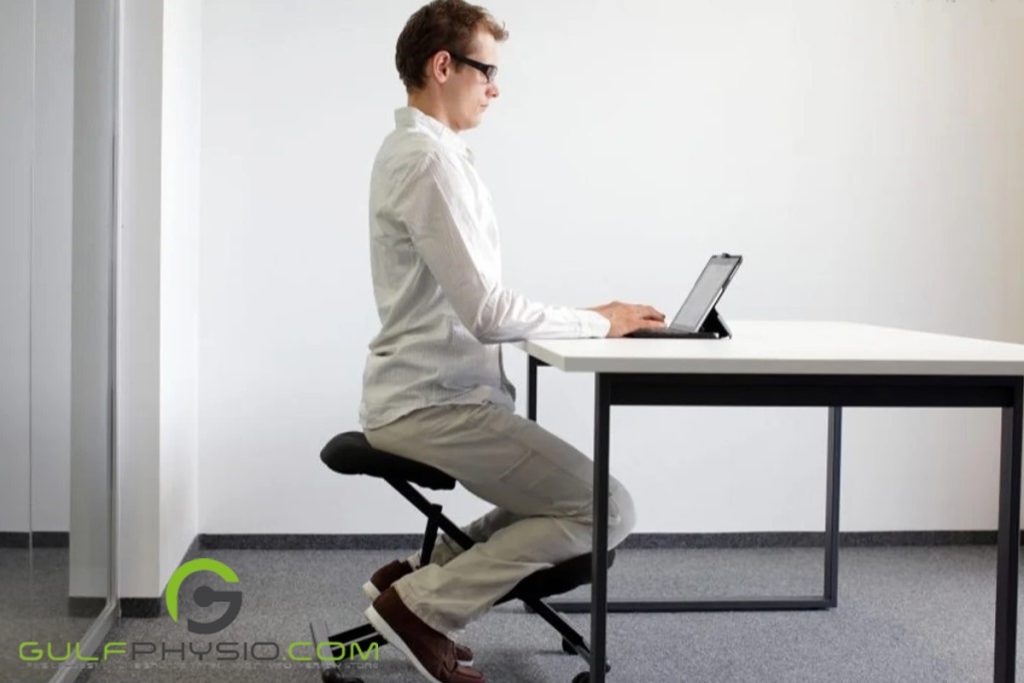
Preferably, the height of the chair back should reach the top of your shoulders while you sit up. With the right lumbar-pelvic posture, your centre of gravity should be on the rib cage or thoracic spine. In this regard, your upper body will require less support but tire more easily. Your seat back should give ample support for that. Don’t forget to stand and move about too.
The height of the chair back doesn’t matter as much. As long as you’re in the right lumbar or pelvis posture, your spine will follow. To help it along, find a shaped support to put behind your back. It should situate the thoracic spine (ribs) on the other side of the lumbar spine curve.
As this way decreases lumbar spinal pressure, another tactic is to recline the office chair but not for the long term. Being in this position will compromise your neck and shoulder health.
Your Body in Angles
Whether in a recline or upright position, it involves angles. Your back will be more comfortable when your new office chair has a back angle adjustment. This adjustment is luckily already commonplace for current office chair models.
The correct back angle adjustment should be enough to give you a relaxed posture, which is around 70 degrees. In doing so, it’ll also further decrease lumbar spinal pressure.
Sitting properly, with your hips being higher than your knees, continue to angle the chair back to 90 degrees. Remember to adjust as you go.
Head Support
Head supports in office chairs and even car seats are not utilized enough. Our heads already have the support of our muscles. Supporting the neck itself is also not a priority. Usually, what’s more significant is the position and height of the monitor or desk in use with the chair itself.
Even if having head supports is not a priority, your top choice should include both depth and height adjustments. They help with putting your neck in a neutral position. The earlobes should be right in the middle of your neck muscles and collarbone for this position.
Armrest Position
After situating your head, your arms are next. They should be in the correct position as well, especially when you don’t solely work at a desk. Armrests are key for this. For one, your armrests should have the right width so they’re not too far from each other. Having your arms at a too-wide angle might contribute to lasting neck and shoulder strain.
Another consideration is the armrest height. The height you need differs between people so adjustable armrests are ideal. The shoulder should be in a relaxed (levelled) position to avoid stress from disproportionate gaps in sizing.
Lastly, the armrests should have the right softness and overall size. Your armrests should be firm enough to support your nerves and bones while being gentle enough for your soft tissues. Your forearms should also fully fit in each one.
In Conclusion
Ergonomic chairs do come in almost every size imaginable, and even price ranges. In every price range, office chairs should have tilt, lumbar, and height support that suits the user’s needs. Chair manufacturers have made fully-supported models even when you’re on a budget.
Whatever chair you choose, the key factor to an easy office chair experience is your posture. When you achieve proper posture whether standing up or sitting down, your work life will be a breeze.

